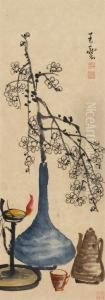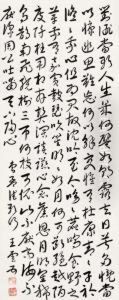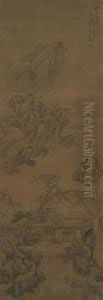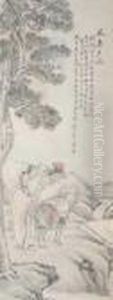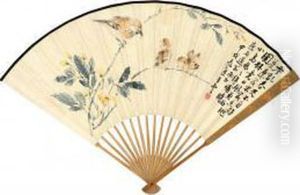Wang Yun Paintings
Wang Yun was a prominent Chinese painter, poet, and calligrapher during the Qing Dynasty, particularly noted for his contributions to the ‘literati’ painting tradition. Born into a scholarly family, Wang Yun's upbringing was steeped in the arts and literature, which greatly influenced his artistic development. His works are characterized by their elegant execution, innovative composition, and deep integration of poetry and painting, reflecting the scholarly ideals of his time.
Throughout his life, Wang Yun was deeply involved in the intellectual and cultural circles of the Qing Dynasty, engaging with many of the leading artists and thinkers of his era. His art often depicted landscapes, flowers, and birds, executed with a refined and understated style that sought to capture the essence and spirit of his subjects rather than their mere outward form. This approach was in keeping with the literati tradition, which valued personal expression and scholarly learning over technical prowess and commercial success.
Wang Yun's contributions to Chinese art were not limited to his paintings. He was also a skilled calligrapher and poet, and his writings offer valuable insights into the aesthetic and philosophical underpinnings of his art. His poetry, much like his paintings, evoked the natural world and explored themes of solitude, transcendence, and the pursuit of harmony between man and nature.
Despite his success and recognition among his contemporaries, Wang Yun's legacy is somewhat overshadowed by that of other Qing Dynasty artists. Nonetheless, his work remains an important part of the history of Chinese art, representing a refined embodiment of the literati ideals that shaped Chinese cultural and artistic practices for centuries. Today, Wang Yun's paintings, calligraphy, and poetry are studied for their contributions to the understanding of Qing Dynasty aesthetics and the broader literati tradition.
